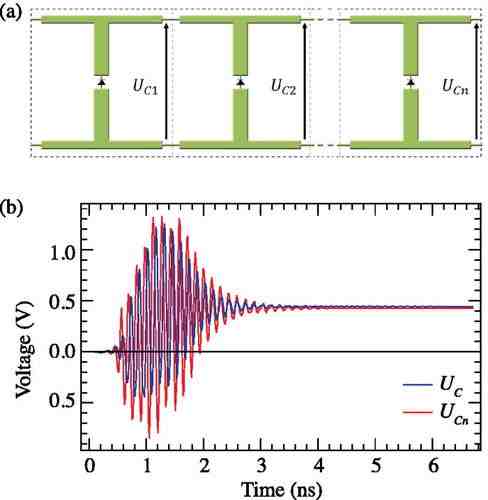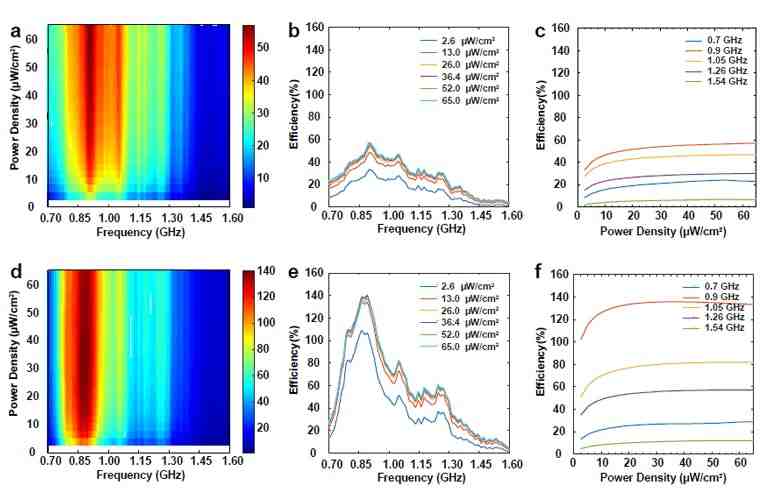Energy harvesting, with its many features, is often an interesting and convenient way to provide low dc processing time for a long time. RF energy harvesting is particularly impressive since the energy is absorbed, while the capture does not cause any negative impact on the intended users — it really “disappears.” Furthermore, unlike most (but not all) fixed sunlight, vibration, or heat harvesting materials, most RF harvesting programs can be mobile to go along with the systems they support.
The key to using natural RF energy as a source of harvest is energy storage. It acts as a transducer to transmit electrical energy and convert it into energy-efficient electricity in the form of electric current and current. While a standard antenna can be used for this purpose — after all, what the antenna does is – the capture frequency is very low and generally not sufficient unless a large, powerful antenna is used.
Metasurface-Based Antenna
Contents

Addressing this challenge, a team at the University of South Florida developed a metasurface-based antenna that is compatible with a useful “door” to generate 100 µW of electricity from a 16- × 16-cm surface. . With a power output of 0.4 µW per square centimeter — about 100 meters of radio waves from a cell tower — they were able to capture and use that power in real time to turn on a small LED.
“With the huge explosion of technologies using radio cables, there will be a lot of air pollution that can be collected,” said Vice President Jiangfeng Zhou. “This, combined with advances in metamaterials, has created an enabling environment for new devices and applications that could benefit from the collection of this waste energy and its use.”
The team used a complete beverage dispenser (MPA) with Schottky diodes as a rectenna to convert the captured RF waves to dc power. Fabry-Perot (FP) MPA fatty acid improves the amount of calories captured. Furthermore, FP resonance exhibits a high Q-factor and increases the tensile strength across Schottky diodes, which improves the correction efficiency, especially at low strength.
“We also placed the cell phone near the antenna while we were calling, and it took enough energy to turn on the LED during the call,” Zhou said. “Although it would be more useful to harvest energy from a cell tower, this demonstrates the ability to carry an antenna.”
Electromagnetic metamaterials (EM) are man-made, usually arranged periodically, metal-resonant structures and behave as a virtual media with effective electronic permeability (ε) and effective magnetic permeability (μ). These two values can be created to provide specific EM properties that do not exist in the environment, such as specific negative values, unobtrusive head-splitting, closed-loop EM, and complete absorption.
Metamaterials also provide the flexibility needed to create small antennae with small data points. In addition, the control power of their electric power and magnetic field further allows to adjust the input / output of the antenna to that of the surrounding environment for optimal energy conversion.
Leveraging the Metamaterial Perfect Absorber

In this process, the fabricated MPA helps to convert the RF waves efficiently to the dc energy by taking the same amount of RF energy into the meta-Perot cavity. MPA-based Rectenna consists of 4 × 4 series of double spaced ring distributors (SRRs) and a copper ground plane (not shown) with a single size, separated by a width (s) (Fig. 1 ).
The sample was fabricated on a brass-coated FR4 screen (dielectric frequency ε = 4.34) using a lithography that followed the chemistry. The Schottky diode (Skyworks SMS-7630-079LF) is sold on a single gap of each SRR to create dc power by adjusting the current pleasant and the RF voltage that occurs. Rows of SRRs are connected by copper debris with an x guide, thus creating a cohesive series of four “batteries”.
The four rows of SRRs are connected by two thick dots at the left and right ends, providing integration with the y-direction. Polarities of diodes are exchanged in rows and columns close to create effective polarities of “batteries” that are effective in alignment and coordination. The average order of diodes also helps to harvest the front and back currents resulting in improved half and bad RF currents that occur, respectively.
The team conducted a full-featured 3D simulation game to address Maxwell’s measurements and obtain computational solutions through Computer Technology (CST) Microwave Studio using state-of-the-art integration technology.
Tests and Results

The tests were performed in an anechoic room located at MITER Corp. (Bedford, Mass.), With the rectenna model combined with a 1-kΩ weight as an agent for heavy work (Fig. 2).
A standard, complete control signal from a conventional trumpet antenna is transmitted to the rectal model, which is placed approximately 380 cm from the transmission antenna. An iron rail was placed on the back of the model with the aim of creating a Fabry-Perot hole to increase the amount of RF captured. All equipment is controlled by the LabVIEW program and the measurement is controlled by clearing both the frequency and frequency response of the RF cable.
The team performed performance tests in a range of measurements. They began to measure the sample for improved RF surfing (Fig. 3).
The average strength of 2.6 μm / cm2 to 65 μm / cm2 is well above what is usually expected from an ambient RF signal. It is probably to be found only in close proximity (& lt; 25m) to a strong RF source such as a cell tower or immediately near a weak RF source.
With or without the train, the average energy harvest occurs at 0.90 GHz, which is equivalent to the frequency predicted by the cross section. Without the train, the SRR system reached a maximum efficiency of ~ 60% at 0.90 GHz when the incident RF frequency reached 65 μm / cm2.
However, when the ground plane is placed at the optimum distance (s = 4 cm), the optimum yield is significantly improved and reaches a maximum efficiency of ~ 140%. (Yes, it is possible: an accuracy above 100% indicates that the ground plane resulting in an improved area of the rectum is much larger than its actual area.)
They also considered quality at a strength comparable to that obtained from ambient sources (up to 1.0 μW / cm2) (Fig. 4). These power levels have been selected to suit those encountered on urban streets, such as GSM (& lt; 1.930 μW / cm2 at 900 MHz and & lt; 6.40 μW / cm2 at 1800 MHz) and 3G (& lt; ; 2.4 )W). / cm2 and 2110 MHz). The quality here is clearly much lower than it is for a strong scale. However, the presence of a ground plane increases the efficiency by a large factor (up to 16) in this case.
Conclusions

The team concludes that designing Ren harvest rectennas based on metamaterial properties is an interesting solution to collect ambient RF energy in low-density environments because they are flexible, highly efficient, and low electricity.
The full-wavelength optical amplifier optimizes the RF-dc amplitude (especially for low power gain) by enhancing the antenna quality range. This eliminates stress due to impedance imbalance and helps to overcome the high resistance below the activation key.
The current type of antenna is much larger than most devices that can make power, so researchers are working for a smaller size. They also want to make a version that can collect energy from different types of radio waves at the same time to generate more energy.
Their research, sponsored by the Asian Bureau of Aerospace Research and Development and the Alfred P. Sloan Institute, is detailed in a concise, nine-page, fast-paced paper “High stud of atmospheric RF energy harvested by metamaterial absorber “printed. in Optical Materials Express. Surprisingly, there is no additional material or video included with the document.

